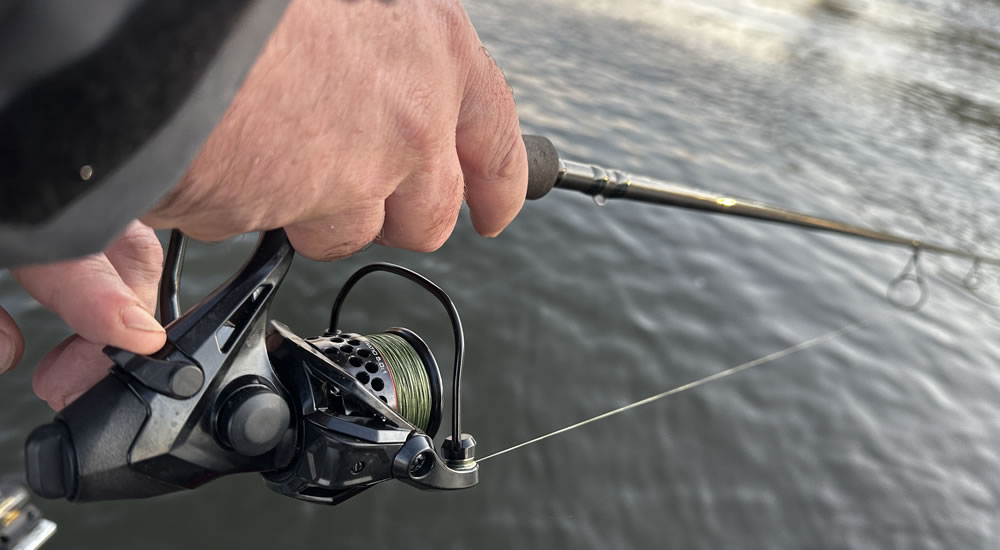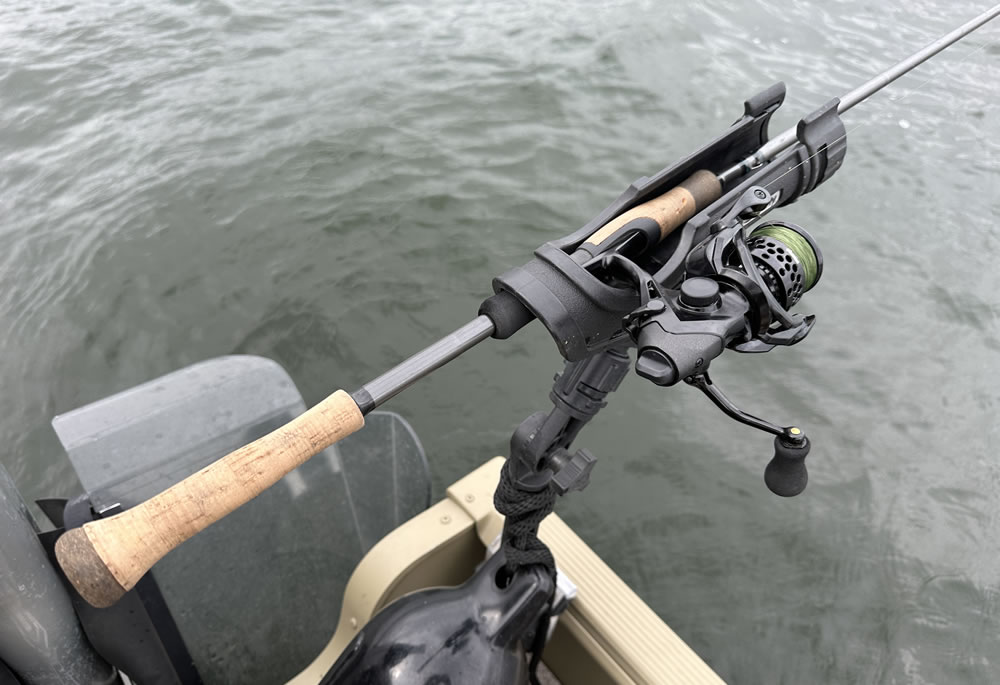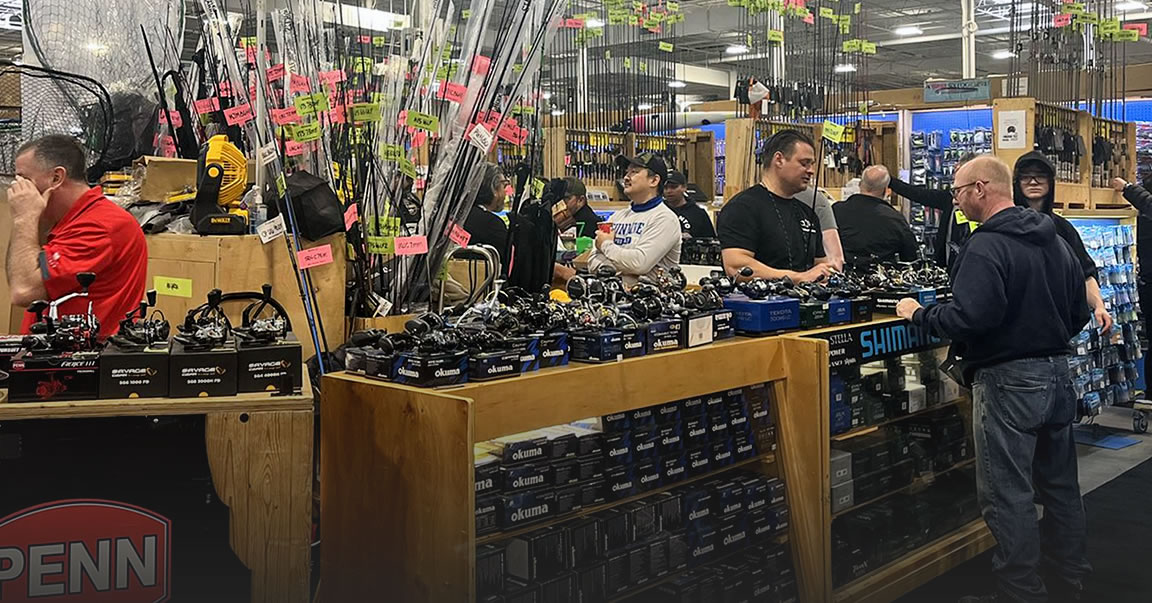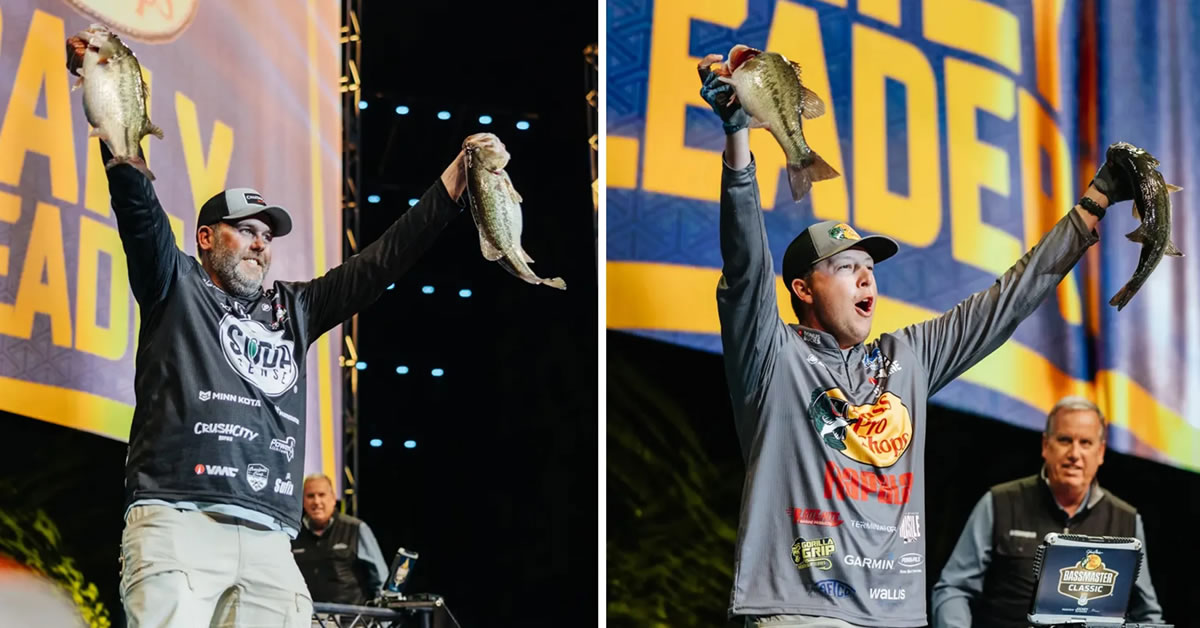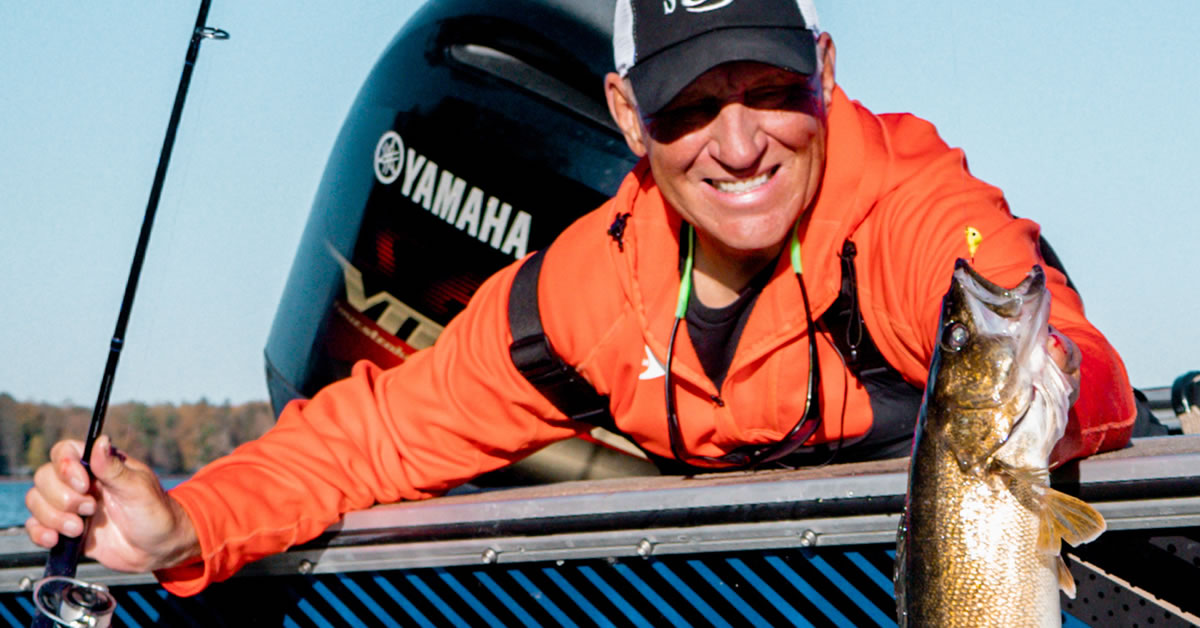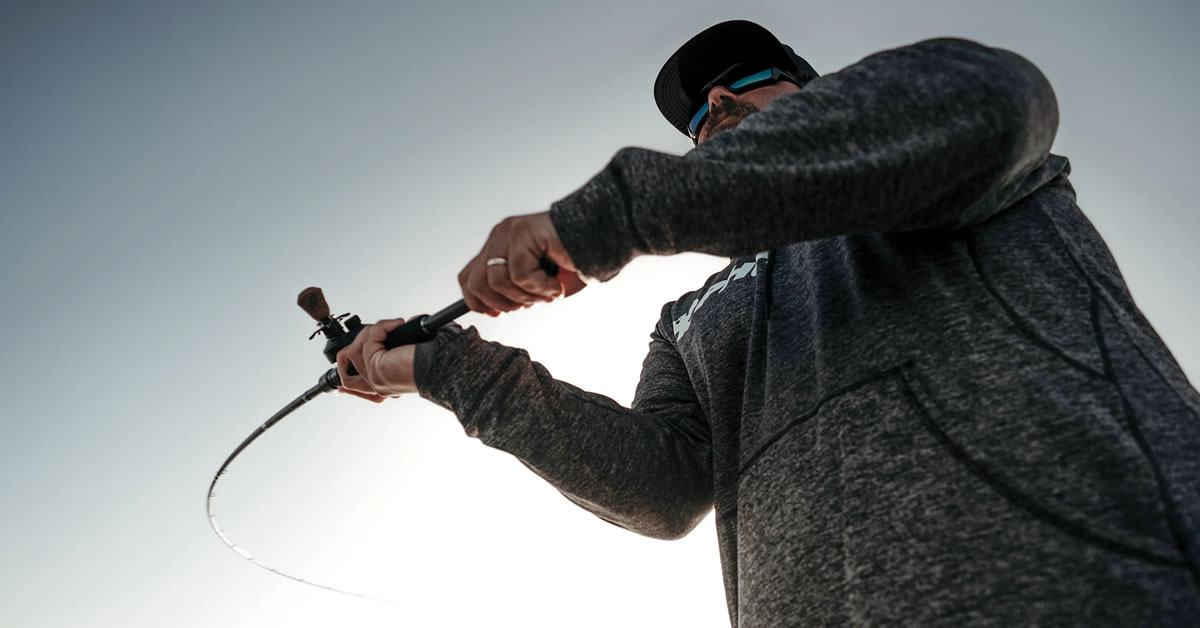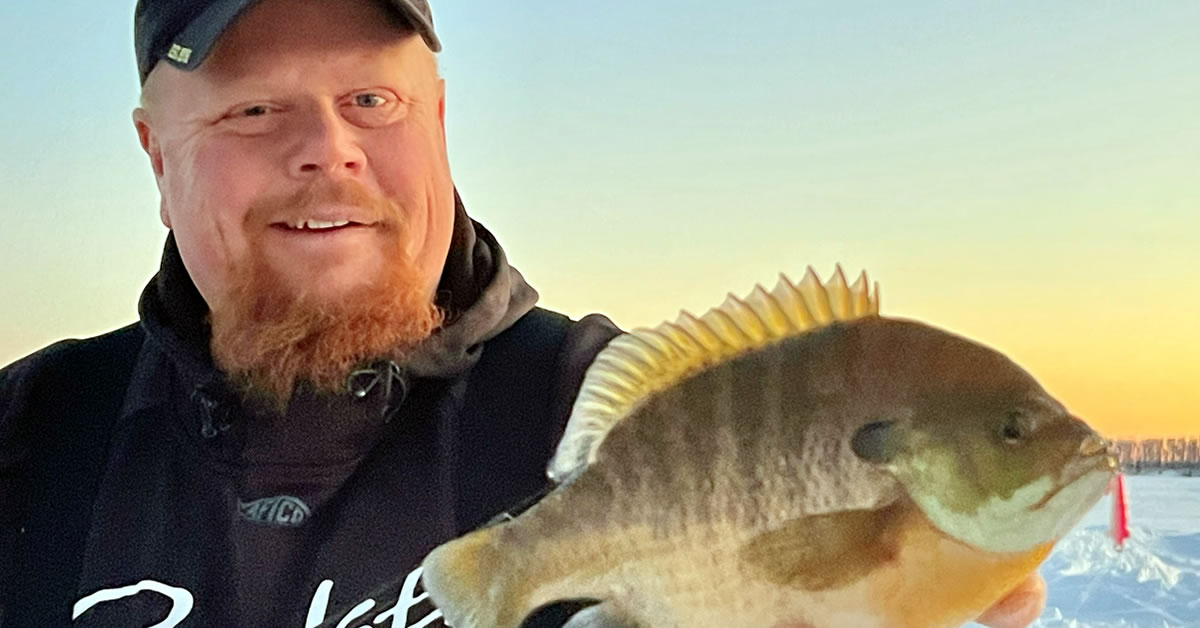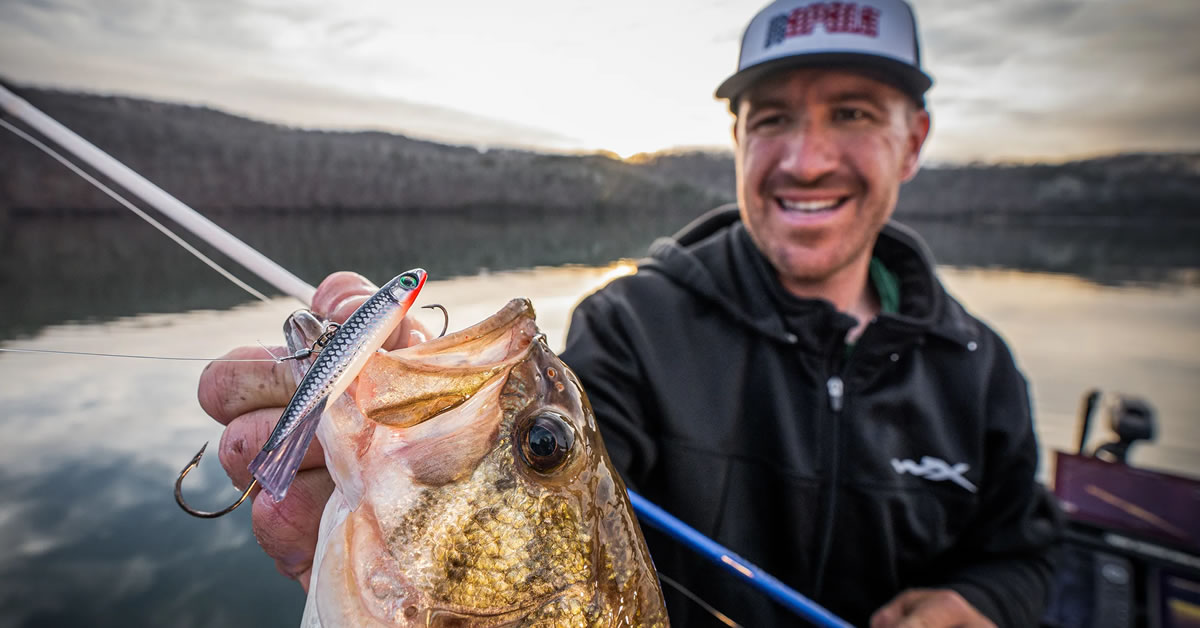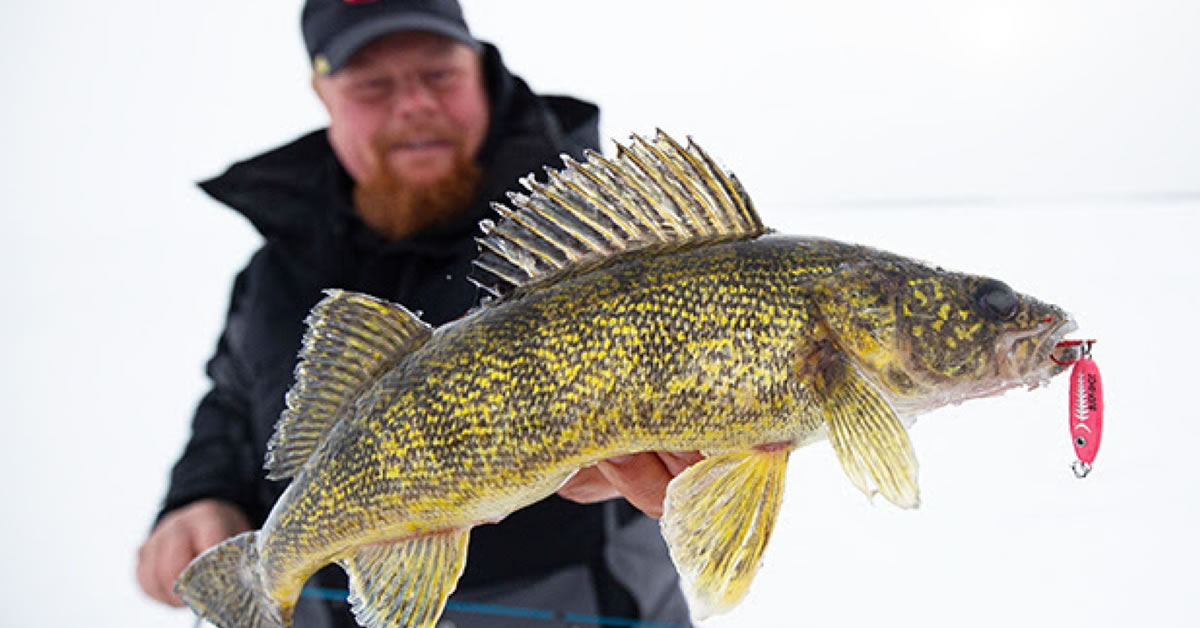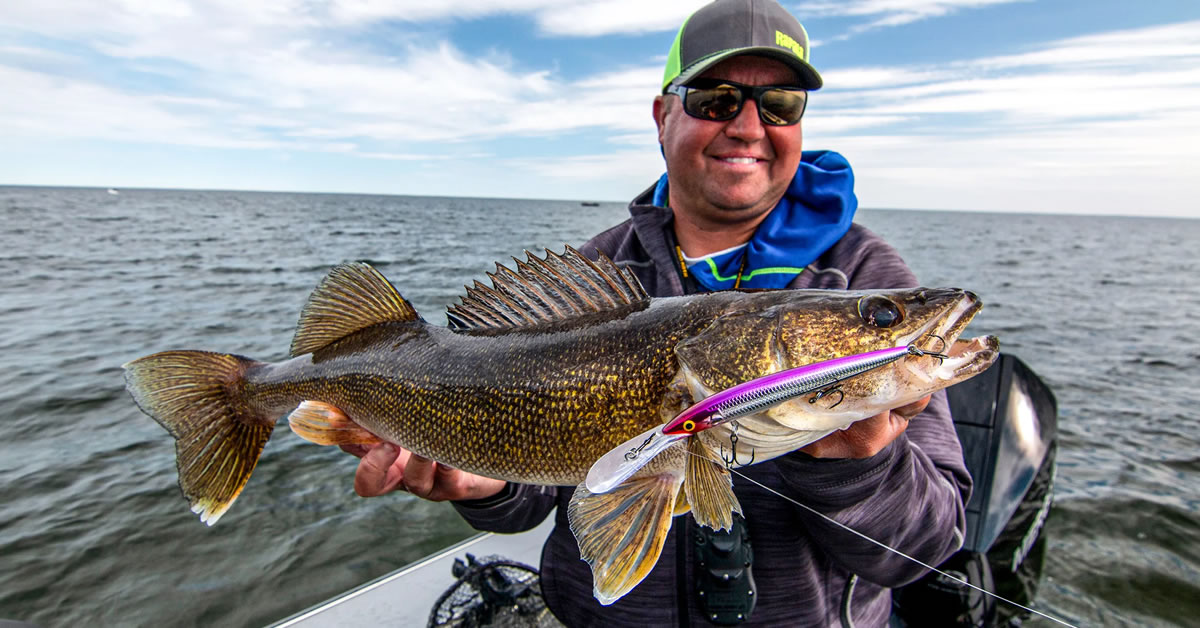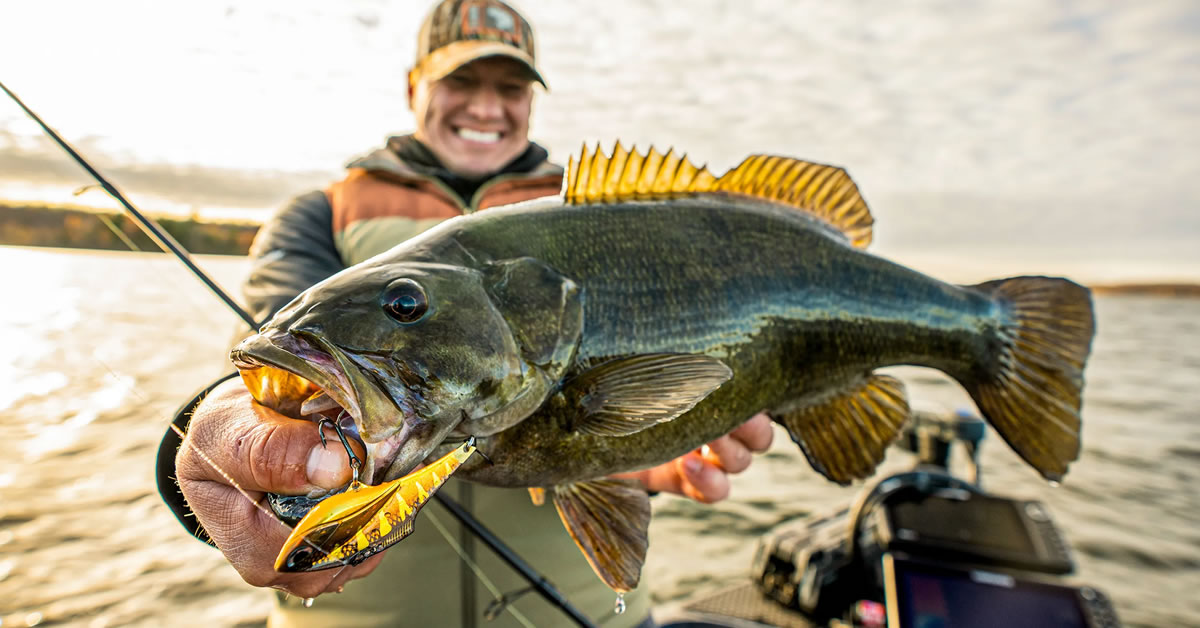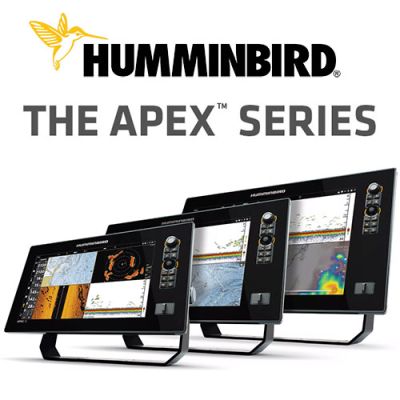"Set It & Forget It" Walleye Fishing
Okuma Ceymar Baitfeeder Spinning Reels Offer A System For Catching More Fish With Less Hassle and Mistakes for under $110
by Lake-Link StaffFirst introduced in 2021, the advantages of fishing Okuma Ceymar baitfeeder spinning reels have only started to catch on.
Seems like ice anglers were the first to discover the sized-down baitfeeder spinning reels, leading to many ditching older methods of open-bail bait-feeding (aka "dead-sticking" and tip-ups) to adopt a much smoother system of "set it & forget it" live bait ice fishing.
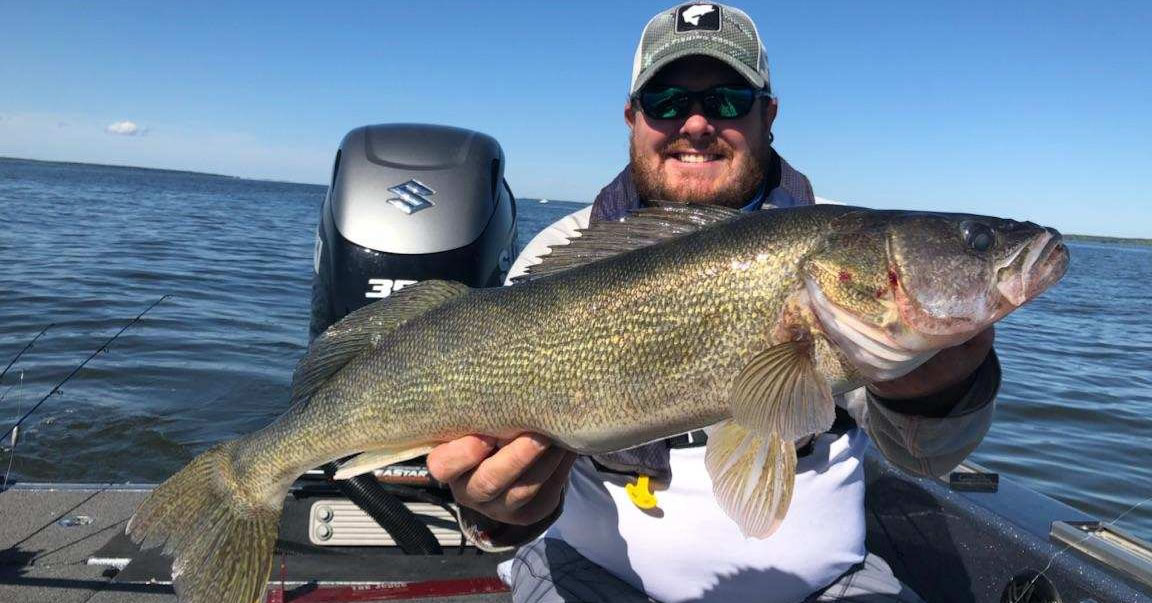
Placed on a rod-holder or the top of a 5-gallon bucket, we quickly learned the advantages of the system. Sometimes finicky walleyes no longer had to pull hard enough to trip a tip-up flag mechanism, which sometimes led to fish spitting the hook/bait. They also proved more effective than rattle reels in the permanent fishhouse last season so we've started to re-think using those all the time, too, as secondary lines to a jigging stick.
While ice fishing last winter we discovered that the secondary Okuma baitfeeding drag resistance could be dialed far back to allow a wary walleye to inhale the minnow and take its time mouthing it before ingesting and moving away from where it grabbed the bait positioned vertically down the hole, then slowly peeling line from the Ceymar 500 or 1000 Baitfeeder spool with such a low level of resistance that the fish didn't notice they were even hooked.
So, unless we're fishing for pike, we longer fish tip-ups. The combination of an Okuma Ceymar baitfeeding reel, quality deadstick, and rod holder is a system that just leads to more bites and landed fish.
But that's not to say you couldn't use an Okuma baitfeeder reel like the larger CBF-40, CBF-55, or CBF-65 reel with more drag pressure and a heavier power ice rod for big pike, lake trout, catfish, or giant walleyes (like Lake Ontario "greenbacks") through the ice. We plan to try experiment with larger Okuma baitfeeding reels this hardwater season and report back.
Open-Water Use
For open-water fishing, there are numerous ways you can use a baitfeeder reel. Here's a summary of ways to "dead-stick" hands-free, soak bait, and often catch fish when more aggressive techniques fall short.
(1) Bottom Set-Lines From Shore
Anglers have been casting out bottom-hugging rigs from shore since the very beginning. Whether you're fishing catfish, sturgeon, rough-fish, or walleyes/saugers, set-lines can be very effective-especially in states where you're allowed more than one line per person.A good starter rig is a short, foot-long leader of monofilament or fluorocarbon tied to an appropriately-sized octopus or live-bait hook, a barrel swivel above the leader (snell) and an egg sinker that matches the depth/current being fished. Creek chubs, redtails, sucker minnows, and medium- to large shiners are all great offerings, especially in the spring and fall of the year when bait pushes shallow and walleyes feed closer to shore.
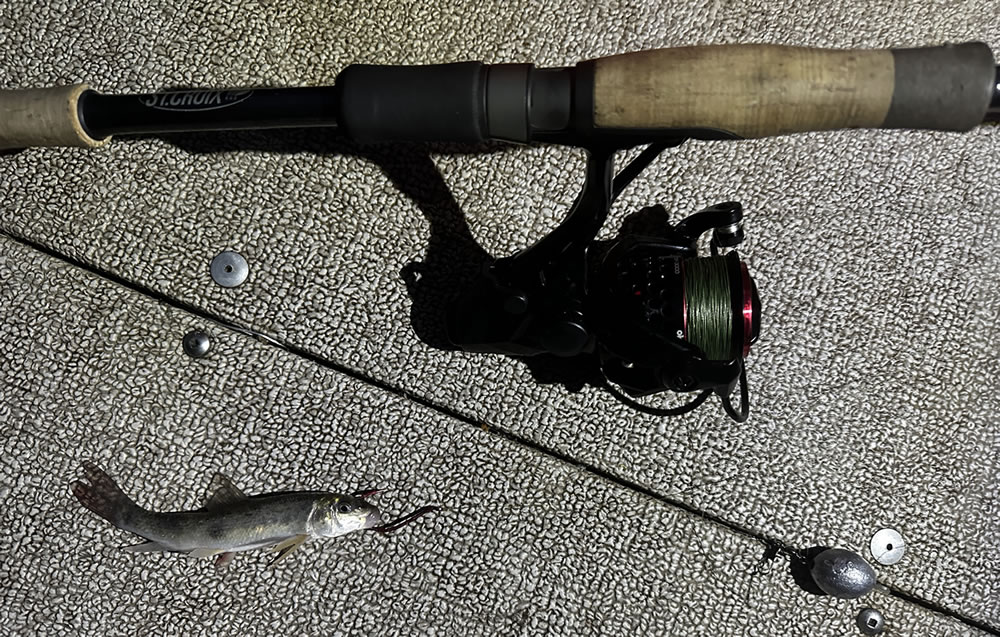
Simply cast out your bait, let it hit bottom, reel up all just a little bit of line slack, and switch the Okuma Ceymar baitfeeder drag into its secondary position, winding the back dial back so the line peels easily off the spool-either letting the large minnow run-or keeping it positioned and in place until a walleye grabs it and starts swimming away.
(2) Bottom Set-Lines From Boat Rod Holders
Something we picked up from friends who live on North Dakota's Lake Sakakawea is fishing creek chubs with Okuma Ceymar baitfeeder reels and very specific rods when walleyes go on a big minnow bite.
Paired with JT Outdoors Walleye Snare rods, Okuma Ceymar CBF-1000 reels provide the linchpin to the system. Baits are made on short-casts to bottom-hugging fish located with electronics, after which the anglers set the rod/reel combo in a rod holder, engaging the baitfeeding drag, then waiting for the spool to spin, only a slight, practically resistance-free bend to the end of the unique Walleye Snare rod.
At either 8' or 9'3" (telescopic-collapsible to 6'3" and 7'10" for storage), Walleye Snare rods allow positioning big chubs away from the boat and with their moderate-fast action, allow for the sweeping hooksets needed to properly pin walleyes after the Okuma Ceymar reel is engaged with the simple flick of a switch into its primary drag setting.Apparently this baitfeeding creek chub system has become absolutely critical to catching fish during certain times of the year on Lake Sakakawea-and during events like the annual Governor's Cup Tournament.
While we haven't tested the Walleye Snares, we did do something similar with a 7'10" medium power, moderate action St. Croix Victory spinning rod and AVID Walleye Series 7' medium power, moderate action rod in combination with CBF-1000 Ceymar reels.
The former rod allowed us to position bottom rigs a little farther from the boat-even pitching along river current seams-while the shorter AVID was used to drop boats close to the boat, typically with a heavy egg sinker to keep the big minnow in place.
What did we learn fishing set-lines from the boat in rod holders?
First, you do stand the chance of catching a big fish with such big bait, letting the bait do all the work. But, more often than not, we discovered that even small 12- to 20-inch walleyes and saugers will eat 5- to 10-inch minnows without a second thought. Of course, this was good news for us-and made for a few good meals.
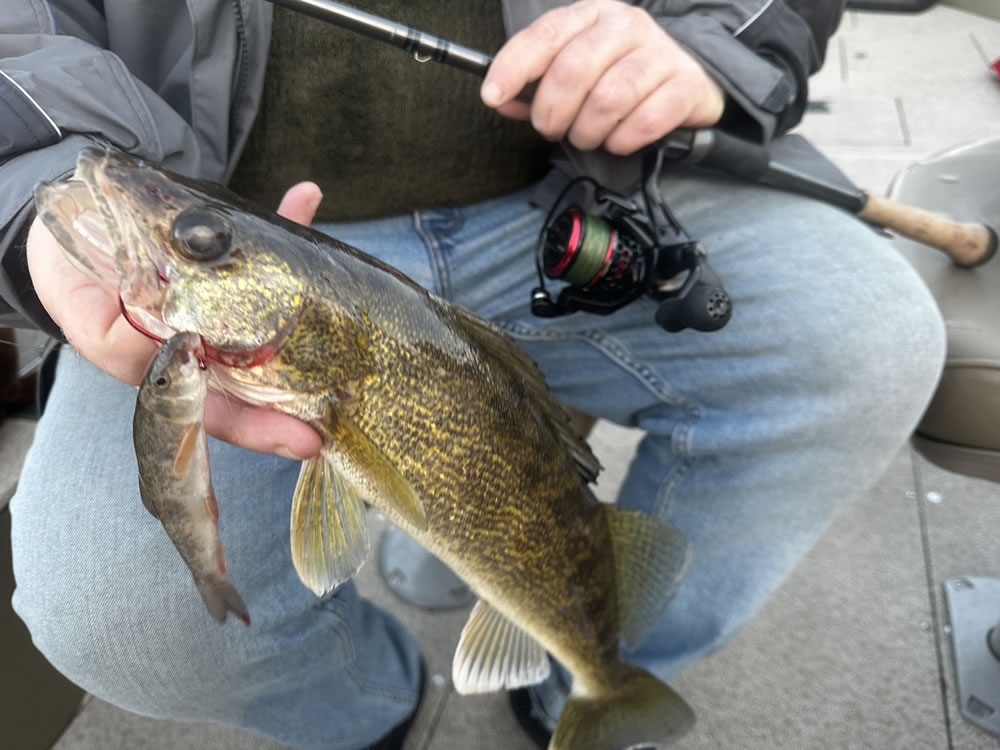
When fishing certain pools of the Mississippi River, I always have one baitfeeder rig in the water while I pitch plastics, jig, or cast with another rod. I was amazing how many times the set-line sitting on bottom caught fish when I struggled to catch fish pitching or jigging.
Along the same lines, whenever I'm fishing in areas where only one line is legal, I always have a minnow soaking in the water on a baitfeeder reel rig while doing busy work like tying up other rods with various baits, organizing, or getting kids or friends set up to fish.
I'll set up on a good-looking spot and drop a baitfeeder rig out before I do anything else. The thought there is at least there's a line in the water-and with Okuma's baitfeeding drag system-I know that I'm probably not going to lose a fish while I'm preoccupied; it's just going to run with the bait until I notice, flip the switch, and set the hook.
(3) Slip Floats From Boat Rod Holders
For anglers walleye fishing slip floats with friends or families, Okuma's bait-feeding drag system can eliminate missed fish due to lack of attention.Not everyone watches his or her bobber all the time and bites can happen fast. With the baitfeeding drag set, if a slip bobber is dunked by a willing walleye, that fish can keep pulling line until someone notices. With kids texting, eating snacks, and who knows what else, it's definitely added insurance.
About the Reels
Designed with an on/off auto trip level, Okuma Ceymar Baitfeeder spinning reels allow fish to take your live bait with the reel spool closed, the level of secondary baitfeeding drag resistance adjusted according to the subtlety of the bites on a given day. This kind of fishing is nothing new-saltwater, catfish, and sturgeon anglers have been doing it for years, with companies like Daiwa, Shimano, and Okuma offering large baitfeeding reels to meet the demands of plus-sized brackish and briny fish.But nobody had thought to bring baitfeeder spinning reel design into the world or ice fishing-or most freshwater fishing-with smaller reel sizes… until Okuma launched Ceymar baitfeeders in 500, 1000, and 3000 sizes a few years ago. The comprehensive Okuma Ceymar baitfeeder family also includes more substantial reels for bigger fish species. Consider the Okuma CBF-40, CBF-55, and power lifter, the Okuma Baitfeeder CBF-65, which will hold 240 yards of 65-pound braid and features 33 pounds of drag.
Specs: Okuma Ceymar Baitfeeder Reels
- On/Off auto trip bait-feeding system to allow bait or hooked fish free runs until hook-set time is determined
- Multi-disc, Japanese oiled felt drag washers
- 7 ball bearings + 1 roller bearing (all stainless steel)
- Quick-set anti-reverse bearing
- Precision, machine-cut brass pinion gear
- Corrosion-resistant graphite body and rotor
- CFR: Cyclonic Flow Rotor technology
- Precision Elliptical Gearing System
- Rigid metal handle design for strength
- Machined aluminum, 2-tone anodized spool with LCS lip
- Heavy-duty, solid aluminum bail wire
- RESII: Computer-balanced Rotor Equalizing System
- CBF-500 features 85 yards/15 lb. braid capacity; 5.0:1 gear ratio; 21.9" per crank; 6 pounds drag; 6.7 ounces
- CBF-1000 features 180 yards/10 lb. braid capacity; 5.0:1 gear ratio; 24" per crank; 6 pounds drag; 7.1 ounces
- CBF-3000 features 160 yards/30 lb. braid capacity; 5.0:1 gear ratio; 28" per crank; 18 pounds drag; 9.5 ounces
For starters, the reels feature an Even Flow Roller System that reduces line twists by freely rolling over the line roller without friction. Then there's a Quick-Set Anti-Reverse that allows anglers to engage the reel in one direction for rock-solid hooksets. And the baitfeeding system is brilliant, giving anglers the ability to disengage their spinning reel spool and allow their bait (or a fish that has inhaled the bait) to run freely.
Okuma Ceymar baitfeeder reels also feature a unique Rotor Equalizing System for precision balance and the elimination of all spool wobble for perfect alignments and smooth cranking.
The three smallest Ceymar baitfeeders feature a 5.0:1 gear ratio for playing fish slowly and easily, 7+1 bearings, weight between 6.7 and 9.5 ounces, and line retrieve from 21.0- to 29-inches per handle turn.
Both the 500 and 1000 models over 6 pounds of drag force, while the 3000 offers 18 pounds. While 6 pounds doesn't seem like a lot, we had no issues playing mid-sized walleyes, as well as the occasional pike, bass, and rough fish via the reels' smooth drag.
All Ceymar baitfeeder reel spools are designed to hold ample amount of line, whether you use braid on top of a little mono backing, fluorocarbon, or monofilament itself, an important consideration when letting bait or fish run before setting the hook, especially in current or deeper water situations.
Closing
If you haven't tried fishing from shore or boat using a baitfeeding reel, we recommend that you do. With Okuma's unique two-drag system, it's super simple to position "set it & forget it rigs" that soak lively minnows or other bait on or near bottom.While we all love to cast and retrieve and experiment with the latest and greatest baits and tactics, sometimes fishing set-lines just gets the job done-and when it comes to putting fish in the cooler or livewell-and eventually on the table-it's hard to argue.
Yes, anglers have been fishing set rigs for decades to catch fish on-the-ice, from the bank or piers, to today's boats rigged with rod-holders-or simply leaving the reel bail open and the rod leaned against the gunnel.
Sometimes letting the minnow do its own thing-with little or no interaction from the angler-is the most natural presentation possible-and the one that gets wary fish (especially walleyes) to bite.


